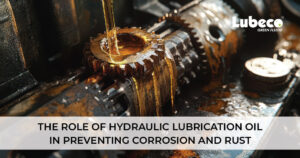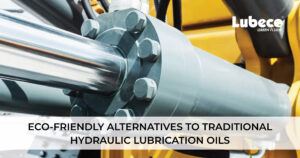Introduction
Machining processes are crucial in various industries, including automotive, aerospace, and manufacturing. These processes often involve the use of cutting fluids, such as neat oils, to improve tool life, surface finish, and overall productivity. However, one common issue that arises during machining operations is the formation of smoke. The generation of smoke can have several undesirable effects, including health hazards, environmental concerns, and reduced visibility in the workplace. In this blog, we will explore the factors contributing to smoke formation and discuss potential methods to minimize or eliminate smoke while machining with neat oils.
Understanding Smoke Formation
Smoke formation during machining operations occurs primarily due to the interaction between the cutting tool, the workpiece, and the cutting fluid. Several factors influence the generation of smoke:
Heat and Friction: The machining process generates heat and friction as the cutting tool comes into contact with the workpiece. The high temperatures can vaporize components present in the cutting fluid, leading to smoke formation.
Chemical Composition of Neat Oils: Neat oils, also known as straight oils, consist of base oils and various additives. Some additives, such as sulfur and chlorine compounds, are often added to enhance performance. However, these additives can decompose under extreme heat and form smoke-inducing byproducts.
Workpiece Material: Different materials have varying responses to machining processes. Some materials, such as stainless steel and titanium alloys, tend to generate more heat during cutting, leading to increased smoke formation.
Effects of Smoke Formation
Smoke generation during machining operations can have several negative consequences:
Health Hazards: The smoke generated during machining may contain harmful substances such as volatile organic compounds (VOCs), fine particulate matter, and metal fumes. Inhalation of these contaminants can pose health risks to machine operators and other personnel in the vicinity.
Environmental Concerns: Smoke release contributes to air pollution and affects the overall environmental quality. It can also result in the deposition of contaminants on nearby surfaces and in water bodies if not properly controlled.
Reduced Visibility: Smoke formation reduces visibility in the machining area, creating potential safety hazards for machine operators. Poor visibility can hinder precision work and increase the risk of accidents.
Methods to Eliminate or Minimize Smoke Formation
Optimize Cutting Parameters: Proper selection of cutting parameters, including cutting speed, feed rate, and depth of cut, can help control heat generation and reduce smoke formation. Employing appropriate cutting tool geometries, coatings, and materials can also enhance the machining process and minimize smoke.
Choose High-Quality Neat Oils: Selecting high-quality neat oils with low smoke-forming additives can significantly reduce smoke generation during machining. Look for products that are specifically designed to be low smoke or smoke-free.
Implement Advanced Machining Techniques: Advanced machining techniques, such as minimum quantity lubrication (MQL) or near-dry machining, use minimal amounts of cutting fluids while still providing lubrication and cooling. These techniques can significantly reduce smoke formation compared to conventional flood cooling methods.
Proper Ventilation and Filtration: Installing effective ventilation systems, including local exhaust ventilation (LEV), can help capture and remove smoke and contaminants at the source. Additionally, using appropriate filtration systems can help eliminate or reduce smoke and particulate matter from the air.
Regular Maintenance and Cleaning: Proper maintenance of machining equipment and regular cleaning of cutting fluid systems can prevent the accumulation of contaminants that contribute to smoke formation. Regular monitoring and replacement of cutting fluids are also essential to maintain their performance and minimize smoke generation.
Employee Training and Awareness: Providing comprehensive training to machine operators and other personnel about the risks associated with smoke formation and the importance of implementing preventive measures can help create a safe and informed work environment. Awareness programs can educate employees about proper handling, storage, and disposal of cutting fluids, as well as the importance of personal protective equipment (PPE) to minimize exposure to smoke and contaminants.
Alternative Machining Methods: In some cases, it may be possible to explore alternative machining methods that reduce or eliminate the need for cutting fluids altogether. For example, technologies like dry machining or cryogenic machining use different approaches to control heat and lubricate the cutting zone without relying on traditional cutting fluids, thus minimizing smoke formation.
Conclusion
While smoke formation during machining with neat oils can pose various challenges, it is possible to minimize or eliminate smoke through a combination of preventive measures, advanced machining techniques, and proper maintenance. Optimizing cutting parameters, choosing high-quality neat oils, implementing advanced machining techniques like MQL, ensuring proper ventilation and filtration, regular maintenance, and employee training are key steps in reducing smoke formation. Additionally, exploring alternative machining methods that reduce reliance on cutting fluids can provide long-term solutions. By addressing smoke generation, we can create safer and more sustainable machining environments, promoting both the well-being of workers and the overall efficiency of machining processes.








